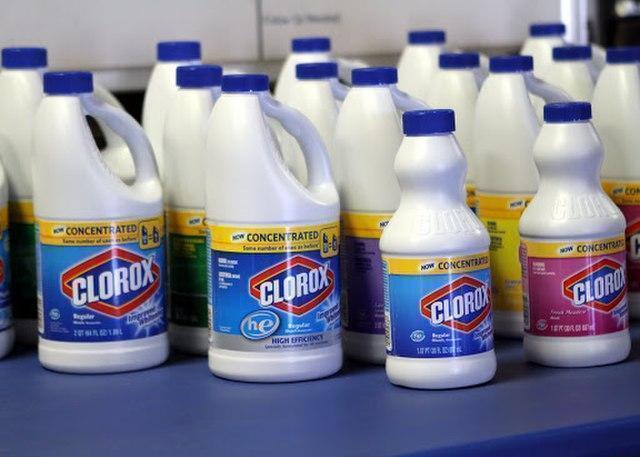While these terms are often used interchangeably, it’s important to understand the difference between them to keep ourselves and our surroundings safe from harmful germs and bacteria.
Cleaning refers to the process of removing dirt, grime, and other impurities from surfaces and objects. This can be done with soap, detergent, and water, or other cleaning products. Cleaning is the first step in keeping surfaces and objects free of germs and bacteria, but it’s not enough to kill them. This is because cleaning is focused on removing visible dirt and grime, rather than destroying germs and bacteria. It is important to clean surfaces and objects regularly to prevent the build-up of dirt and grime, which can harbor germs and bacteria. Moreover, Cleaning is a crucial step that needs to be done before disinfecting or sanitizing, as germs and bacteria can hide under dirt and grime, making them harder to eliminate.
Sanitizing is the process of reducing the number of germs and bacteria on surfaces and objects to a safe level. This can be done with a variety of sanitizing products, such as chlorine and quaternary ammonium compounds. Sanitizing is often used in food service and healthcare settings to keep surfaces and objects safe for human contact. This is because Sanitizing is focused on reducing the number of germs and bacteria to a safe level, rather than killing them all. Sanitizing is typically done after cleaning and disinfecting, and it is important to use products that are specifically designed for sanitizing and to follow the instructions on the product label. The CDC defines sanitizing as decreasing the amount of bacteria on a surface to ensure it is safe, according to public health criteria. Sanitizing is typically more delicate than disinfection methods. And the term safe level, as defined by the CDC is defined as “judged by public health standards or requirements.”
Disinfecting, on the other hand, refers to the process of killing germs and bacteria on surfaces and objects. This can be done with a variety of disinfecting products, such as bleach, hydrogen peroxide, and alcohol. Disinfecting is an important step in preventing the spread of infectious diseases, but it’s not always necessary. For example, everyday surfaces like tables, counters, and doorknobs do not need to be disinfected every day, but high-touch surfaces should be disinfected frequently. Additionally, when disinfecting, it is important to use products that are effective against the specific germs or bacteria that you are trying to eliminate, and to use them in the correct concentration and duration as recommended on the product label. Sanitizing and disinfecting are two distinct steps. Sanitization refers to reducing germs on surfaces or objects by cleaning, while disinfection means killing almost all the bacteria present with chemical agents. While it doesn’t remove dirt, this step is necessary in order to reduce the risk of infection. Another definition supplied by the EPA makes the distinction that disinfection is intended to kill both viruses and bacteria, while sanitizing is not intended to kill viruses.
It’s important to note that cleaning and disinfecting should be done in the correct order. First, surfaces should be cleaned to remove dirt and grime, then disinfected to kill germs and bacteria. Sanitizing is the last step and is used to reduce the number of germs and bacteria to a safe level. This is because if the surfaces are not cleaned first, the germs and bacteria can hide under dirt and grime, making them harder to eliminate. Additionally, if surfaces are not disinfected after cleaning, the germs and bacteria that survive the cleaning process can multiply.
When it comes to choosing cleaning products, it’s important to use products that are specifically designed for cleaning, disinfecting, or sanitizing. Not all products are created equal, and some may not be effective against certain germs or bacteria. It’s also important to follow the instructions on the product label and to use the product in the correct concentration. Additionally, it is important to check the expiration date of the products and to discard them if they are expired.
To further prevent the spread of germs and bacteria, it’s important to practice good hygiene, such as washing your hands frequently and keeping your surroundings clean. Additionally, disinfecting high-touch surfaces, such as door handles and light switches, regularly can also help. Furthermore, promoting good hygiene among employees, family members, or friends can significantly decrease the risk of germs and bacteria spreading.
In conclusion, Cleaning, Disinfecting, and Sanitizing are three different processes that have different purposes and should be done in the correct order. By understanding the difference between these processes and using the right products, we can keep ourselves and our surroundings safe from harmful germs and bacteria. It’s important to clean surfaces first, then disinfect, and finally sanitize to effectively eliminate germs and bacteria. Additionally, using products that are specifically designed for cleaning, disinfecting, or sanitizing, following the instructions on the product label, and practicing good hygiene are crucial steps to prevent the spread of germs and bacteria. By following these guidelines, we can create a safer and healthier environment for ourselves and others
Image Reference:
- https://commons.wikimedia.org/wiki/File:Clorox_Bleach_products.jpg










